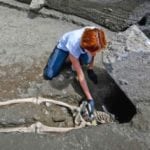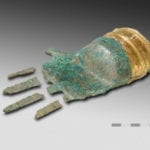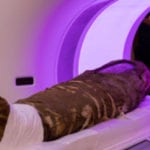 Politics
Politics  Politics
Politics  Weird Stuff
Weird Stuff Ten Bizarre Facts About The Doge Meme
 Our World
Our World 10 Ways Your Christmas Tree Is More Lit Than You Think
 Movies and TV
Movies and TV The 10 Coolest Stars to Set Sail on The Love Boat
 History
History 10 Things You Didn’t Know About the American National Anthem
 Technology
Technology Top 10 Everyday Tech Buzzwords That Hide a Darker Past
 Humans
Humans 10 Everyday Human Behaviors That Are Actually Survival Instincts
 Animals
Animals 10 Animals That Humiliated and Harmed Historical Leaders
 History
History 10 Most Influential Protests in Modern History
 Creepy
Creepy 10 More Representations of Death from Myth, Legend, and Folktale
 Politics
Politics 10 Political Scandals That Sent Crowds Into the Streets
 Weird Stuff
Weird Stuff Ten Bizarre Facts About The Doge Meme
 Our World
Our World 10 Ways Your Christmas Tree Is More Lit Than You Think
Who's Behind Listverse?

Jamie Frater
Head Editor
Jamie founded Listverse due to an insatiable desire to share fascinating, obscure, and bizarre facts. He has been a guest speaker on numerous national radio and television stations and is a five time published author.
More About Us Movies and TV
Movies and TV The 10 Coolest Stars to Set Sail on The Love Boat
 History
History 10 Things You Didn’t Know About the American National Anthem
 Technology
Technology Top 10 Everyday Tech Buzzwords That Hide a Darker Past
 Humans
Humans 10 Everyday Human Behaviors That Are Actually Survival Instincts
 Animals
Animals 10 Animals That Humiliated and Harmed Historical Leaders
 History
History 10 Most Influential Protests in Modern History
 Creepy
Creepy 10 More Representations of Death from Myth, Legend, and Folktale
10 Mysteries From The Emerald Isle
There’s a dark sort of romance that covers all of Ireland. There are places that don’t seem entirely of this world and some places where you can feel the thousands of years of history and the countless footsteps that have walked the ground before you. And there are plenty of mysteries there. Some are so old they’re in that foggy area between history and legend.
10The Drumkeeragh Bog Body
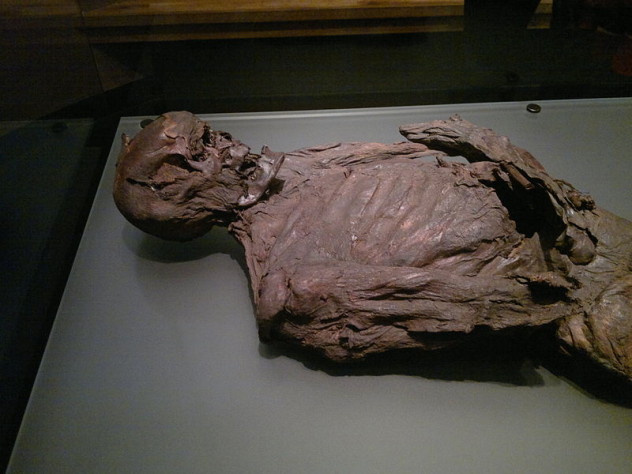
The very first bog body ever found was discovered in 1780, and we’re not entirely sure what happened to it. We do have a description of it written by the Irish countess Moira before it was reburied somewhere else. When it was first discovered, and before it got into the hands of the countess, the body had been pretty extensively damaged. Pieces were broken off and, strangely, some of its clothing had been removed to be used again by the peasants that had discovered the body. There’s a lot we don’t know about this historic find as it’s never been accurately dated. The Lady Moira kept a piece of clothing from the body along with a 40-centimeter (16 in) piece of hair.
In her writings about the body, she suspected the corpse had something to do with some sort of Druidic ceremony, although exactly why she thought that has long been lost. Today, archaeologists are guessing that the body might have been much more recent than she suspected, perhaps dating to after the medieval period. The bog bodies have always held something of a special fascination for archaeologists and history buffs alike and, years after Lady Moira wrote her observations about the very first one discovered, Himmler declared that the unnatural ending met by the bog bodies were proof that the homosexuals of society had met their end by a very distinct sort of death.
9Robert Emmet’s Final Resting Place
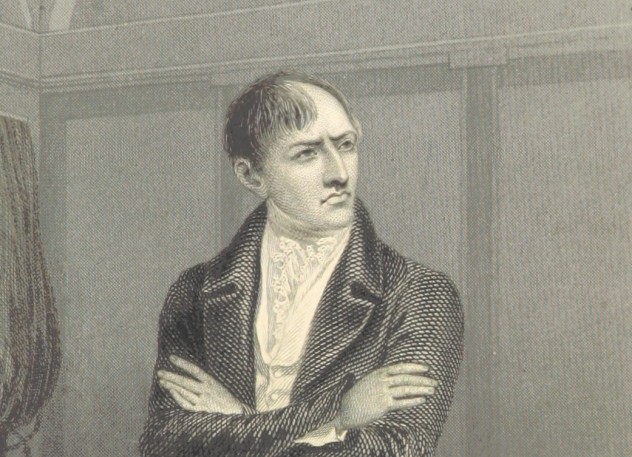
Ireland’s recent history has been rife with uprisings against the British. In 1798 and again in 1803, rebellions were organized in large part by the United Irishmen with Robert Emmet deep in the middle of things.
And considering there were no real mass communication systems at the time, the efforts were pretty impressively coordinated affairs. A group of rebels was planning on taking Dublin while other groups spread out in the other counties across Ireland causing more conflict at the local levels. After the failure of the 1798 uprising, rebels were even more cautious the next time around. A group of Kildare men, not happy with the weapons they were presented with before they were to go into action, turned around and went home rather than wade into the thick of rebellion with unsatisfactory arms.
Instead of the thousands of rebels they had been counting on, there were only about 100 men who showed up prepared to march on the British seat in Dublin. After the death of the first man, Emmet attempted to stop the rebellion but, at that point, everything had already been set in motion. At the end of the fighting, half of his force and 20 British soldiers were dead.
Eventually captured, he was tried, hanged, beheaded, and his body displayed at Kilmainham Gaol. Just what happened to his remains after that has long been a mystery, but it’s one that still might be solved someday. There are descendants of Emmet who are still alive and willing to provide DNA samples that could be matched to any potential remains.
In 2003, the mystery was revisited with the discovery of a headless skeleton that had been buried in what was once the Church of Ireland churchyard. In the 1980s, a separate skull had been found, leading to speculation it was Emmet. The remains were reburied without testing, though.
8Dunluce Castle
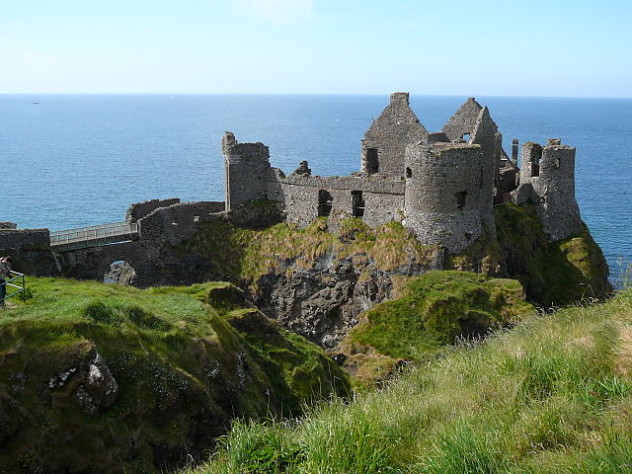
If Dunluce Castle looks familiar, that’s for a good reason—it’s used as the filming location for the Iron Islands, seat of the Greyjoys, in HBO’s Game of Thrones. The castle itself has been extremely well documented since it was first established along with the surrounding 17th-century market town. In the early 1600s, it was home to about 300 people; by the middle of the century, it was swept up in rebellion, damaged, and ultimately abandoned.
It was only in 2015 that archaeologists realized there was a much older stone settlement that had once been built in the area. Dating back to sometime in the 15th century, the settlement would have been more contemporary with the castle’s original construction, and it would have circled the gates high up on the cliffs. Discoveries of fireplaces have allowed for carbon-dating, confirming that the settlement was occupied at the same time the castle was being inhabited by its founders, the MacQuillans. Just who lived in the settlement, and what kind of relationship they had with the builders of Dunluce, is a complete mystery. No other records of the settlement or the people have been found.
7The Round Towers
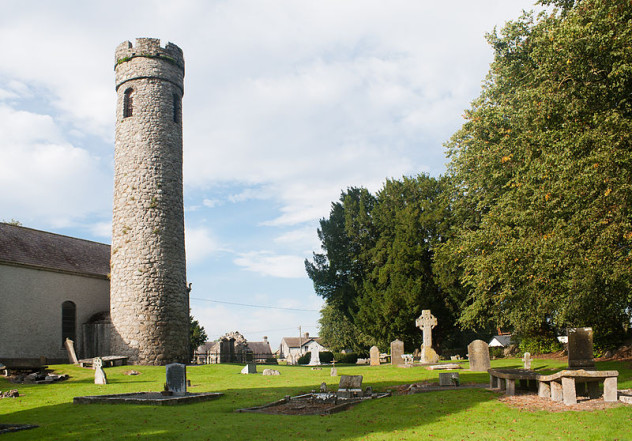
In addition to the megaliths, they’re one of the most recognizable structures from Irish history—the round towers. Tall, slender towers, usually with a wooden door at the bottom and a conical roof with a window or two, are incredibly common across the country. But we also have no idea where they came from or the purpose of their original design.
To be exact, there are 65 scattered around the country. The best guess that archaeologists have been able to make as to when they were built is sometime from A.D. 600–900. They’re all built using the same method with one outer wall surrounding one inner wall that’s filled with rubble and debris. All of the towers are incredibly similar in size, and many have measurements within a few meters of each other.
There are a number of different theories as to what they were used for. Some have suggested they were simply belfries or watchtowers, while others have suggested a more religious use for them. Some believe they were used for keeping a sacred fire burning, but some claim they’re more Christian in origin. Even these claimants suggest that a likely use for them might have been the keeping of sacred books or relics or that they were used as beacons or signaling towers to communicate with others in the area.
According to a theory by American Philip Callahan, the towers may have been constructed to collect magnetic energy and focus it into a specific area. He says that his theory is supported by the idea that all of the towers seem to be built with materials like red sandstone and limestone which were materials known for being able to harness and focus energies. Regardless of whether or not magnetic energy has anything to do with it, the idea of the delicate, narrow towers being used for any kind of defense besides being a watchtower does seem unlikely.
6Constance Wilde

Oscar Wilde (pictured) is one of literature’s most colorful figures, and the death of his wife has long been a tragic mystery. While recently uncovered letters have shed some new light on her sad fate, it’s still up for debate as to what was the cause of her downward spiral and ultimate untimely death.
Constance Wilde was an incredible figure in her own right. An accomplished author, writer, and editor, she was also involved in politics. After the scandal surrounding her husband finally led to his imprisonment, she and their children fled to Italy and took the family name Holland.
That was in 1895 and, over the next years, her condition grew progressively worse. She suffered from severe head, neck, and leg pain that left her unable to walk and exhausted after only the shortest of trips. Finally, the pain in her legs caused doctors to diagnose her with gynecological problems, and when lotions and surface treatments didn’t do anything, they resorted to surgery.
She died on April 7, 1898, only a few days after surgery. The doctor that performed it would spend the next few decades dodging lawsuits and charges, and he was finally suspended from his professorship for misconduct and unethical behavior in 1918. But just what was actually wrong with Wilde has long been up for debate with theories about her mysterious illness including things like a spinal injury she sustained after a fall and complications from syphilis that she had contracted from her husband.
A new review of her symptoms seems to point to something very different and something that was just being acknowledged at the time—multiple sclerosis. Known at the time, but not widely so, the symptoms as described in her letters seem to indicate that it ultimately led to her death.
5The Incredible Artwork Of Newgrange And Knowth
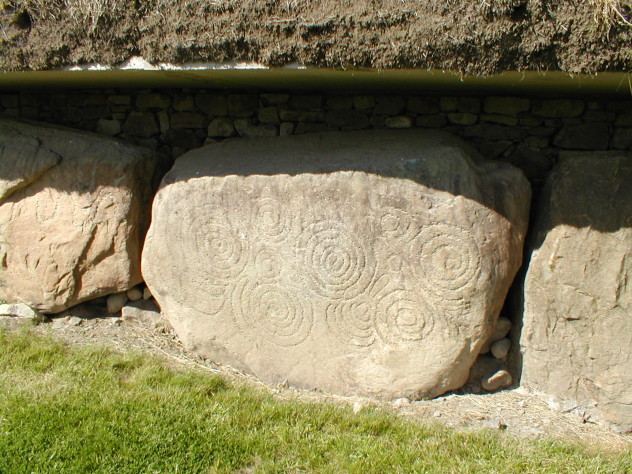
Newgrange is one of the most incredible portal tombs in Ireland but, unless you get up close, there’s something that you’re missing.
The stones are literally covered with artwork painstakingly chiseled into the rock. The art has survived for 5,000 years, and it’s pretty incredible. All over the tomb are spirals, triangles, circles, stars, and intricately drawn mazes. And we have no idea what they mean. There are plenty of very cool theories, ranging from the idea that they’re symbolic of the movement of the stars and other celestial bodies in the sky to the idea that they’re maps of some sort. They might be maps of this world or the next or maps of the fairy realm or the afterlife.
Some of the channels have a very practical use and were carved into the rock to divert the flow of water away from the center of the tomb to prevent the ground from becoming saturated and eventually damaged. But, with other carvings, we’re not so sure. Some have even suggested that the carvings were done under the influence of various hallucinogenic substances and provide a pretty skewed interpretation of the stars or the land. That would explain why we can’t understand it.
And the carving isn’t just on the surfaces you can see. In some places, the carvings were done on stones that were later set into place, hiding part of the design and suggesting that it isn’t seeing the carvings that’s the important part—perhaps they were seen as some sort of transformative talisman.
4The Hellfire Club
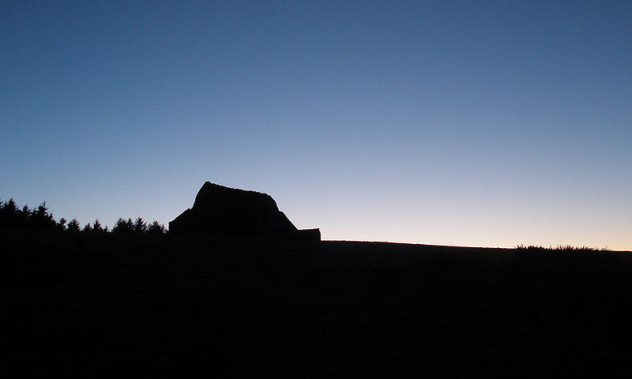
The charred, burned remains of the building still known as the Hellfire Club stands on a hill overlooking Dublin. Just what happened there has long been a mystery, though, and the stories told about it are part history, part religion, and part folklore.
We know that Montpelier was originally built in 1725 by William Connolly, one of the richest men in Ireland. He was so rich that he apparently didn’t care about giving offense to the spirits by building his hunting lodge on a cairn. According to some stories, he destroyed the ancient burial place and reused the stones in the building. It wasn’t long after it was built that the roof blew off, and locals thought it was a clear sign.
Connolly died four years later, and the building fell into the hands of Richard Parsons, the man who brought the Hellfire Club to Ireland. That we know; then the stories start.
It was said that one chair was always left empty at every meeting, and that chair was for the devil. A local farmer who’d wandered up to try to get a look at what was going on was said to have been found the next day, deaf and mute. It was supposedly home to a huge black cat with the horns and eyes of the devil, and it wasn’t unusual to see a strange visitor with cloven hooves.
What really happened up at the Hellfire Club was probably less supernatural, but we know the club members did frequently find themselves on the wrong side of the law. But, as most of them were incredibly rich and incredibly powerful, many of their misdeeds were swept under the rug. Drinking and gambling were pretty much a given, and it’s likely that murder was an occasional outcome as well. How much murder only the charred walls of the club really know.
3Ireland’s Mysteriously Appearing And Disappearing Lakes
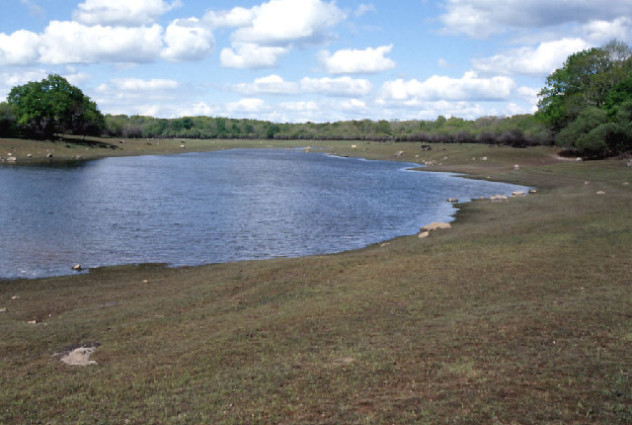
Occurring only in Ireland, the turlough is a seasonal lake that disappears in the summer and reappears in the wetter winter months. Most of them are in the western part of the country where a layer of limestone often prevents drainage from happening as well as it normally would.
Lakes appear seemingly overnight, collecting in depressions in the land after even a single strong rain shower. Turloughs often happen in the same places, but that’s not a steadfast rule. Normally, channels in the limestone allow rainwater to flow away and underground but, should the channels get blocked with rock or other debris, it could turn almost any area into a turlough overnight. In some areas, it can take only an hour of rain for a lake to form. And, because rain happens a lot in Ireland, they’re pretty common.
They’re nothing to mess around with, either. Turloughs average about 2 meters (6.5 ft) deep, but some are more than double that depth. They’re so unpredictable that it’s next to impossible to tell how long it’s going to take for one to appear or disappear and just how it’s draining. Because much of the open land in the west is used for grazing, the turloughs are both a blessing and a curse. They’re a blessing because they re-fertilize the land, and they’re a curse because we just don’t know when they’re going to happen.
2Peter Bergmann
http://vimeo.com/78337126
In June 2009, the body of a man washed up on a beach in Rosses Point, Sligo. We know absolutely nothing about the mystery man who only had four members of the Irish Gardai at his funeral, but we know a lot about how he spent his last days.
He gave his name as Peter Bergmann and his address as Ainstettersn 15, 4472, Wien, Austria. Hotel staff at the Sligo City Hotel, where he spent his last nights, say that he had a German accent. Later, when detectives went to track down his origin and his family, they found the name was a fake one and so was his address. He had arrived in Sligo a few days prior to his death, and he’d gotten there by taking a bus from Derry. He paid for everything in cash, and he was regularly seen leaving his hotel with a purple plastic bag. When he left the hotel, the bag would have something in it; when he came back, it would be empty.
On June 13, he purchased a handful of stamps and airmail stickers, but no one has been able to trace where he might have sent packages. On June 14, a taxi driver recounts dropping him at a bus station after responding to his inquiry about a good place to swim. The taxi driver told him about Rosses Point where his body would later be discovered.
And, on June 15, he left the hotel carrying two bags and his purple plastic bag; he was missing one of the pieces of luggage that he’d originally had when he checked into the hotel, and it was never found. He walked to the Quayside Shopping Centre, waited there for a bit, then stopped for a sandwich at a corner shop. Seen looking at a piece of paper over and over again, he finally tore it up and left to catch a bus for Rosses Point.
His body was later found wearing swimming trunks. A pile of his belongings—including his clothes, cash, watch, and a stack of blank sheets of paper—was found a short distance from where the body was discovered. The search for any information about the mysterious Peter Bergmann went on for months and stretched across Europe, but no one has ever identified the man.
1The Gold Of The SS Laurentic

There are plenty of lost treasures in the world, and this is one that you can actually get to (sort of). The wreck of the World War I–era liner the SS Laurentic is just off the coast of County Donegal, and it’s known as being one of the most accessible of Ireland’s many coastal shipwrecks. According to the story, there are a whole bunch of gold bars that are still missing.
The SS Laurentic was one of the fleet belonging to the White Star Line, the same company that owned the Titanic. When it was launched in 1909, it was state-of-the-art and, in 1914, it became the HMS Laurentic, designated for transporting troops during the war. Originally, it was outfitted with light weaponry and destined for use in patrols and escort duties across the North Atlantic, but in December 1916, its captain got new orders to deliver some incredibly important cargo to Nova Scotia.
The Laurentic was temporarily delayed in its trip as it needed to make a stop to drop off some crewmembers that had come down with the early warning signs of yellow fever. Meanwhile, a U-boat was seen off the coast and, when Laurentic left, it struck two mines that had been set. Although some of the crew did make it to the lifeboats, the cold Atlantic storms proved deadly, and many were found still sitting in the lifeboats, frozen, oars clasped in their hands.
All resources during the war were valuable, and the British government needed to salvage the gold that was now at the bottom of the ocean. Unlike other lost or buried treasure, this one’s confirmed. They even recovered a large amount of it. The first retrieval expeditions took place right away with early efforts managing to bring up part of the treasure before being forced to stop because of the Atlantic storms. The severe conditions caused part of the ship to collapse, adding to the difficulty. Another expedition set out in 1924 but was eventually called off when the cost of the divers and the team were no longer making it worthwhile.
In the 1930s, a privately owned British company took another crack at it, and they brought up three gold bars. Expeditions in the 1950s and 1980s had no luck. There are still about 22 bars of gold unaccounted for. So, yes, we know there’s still gold to be found in Ireland.



